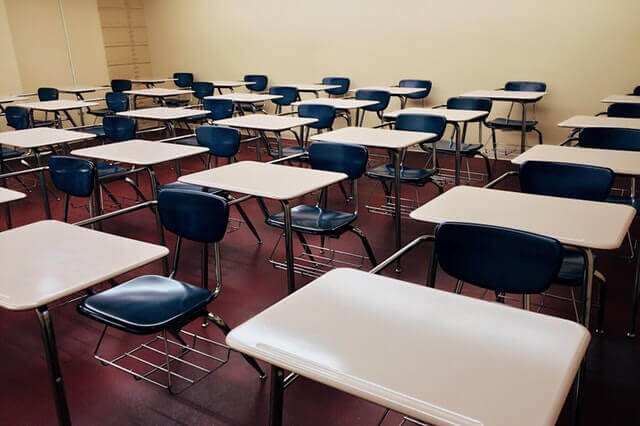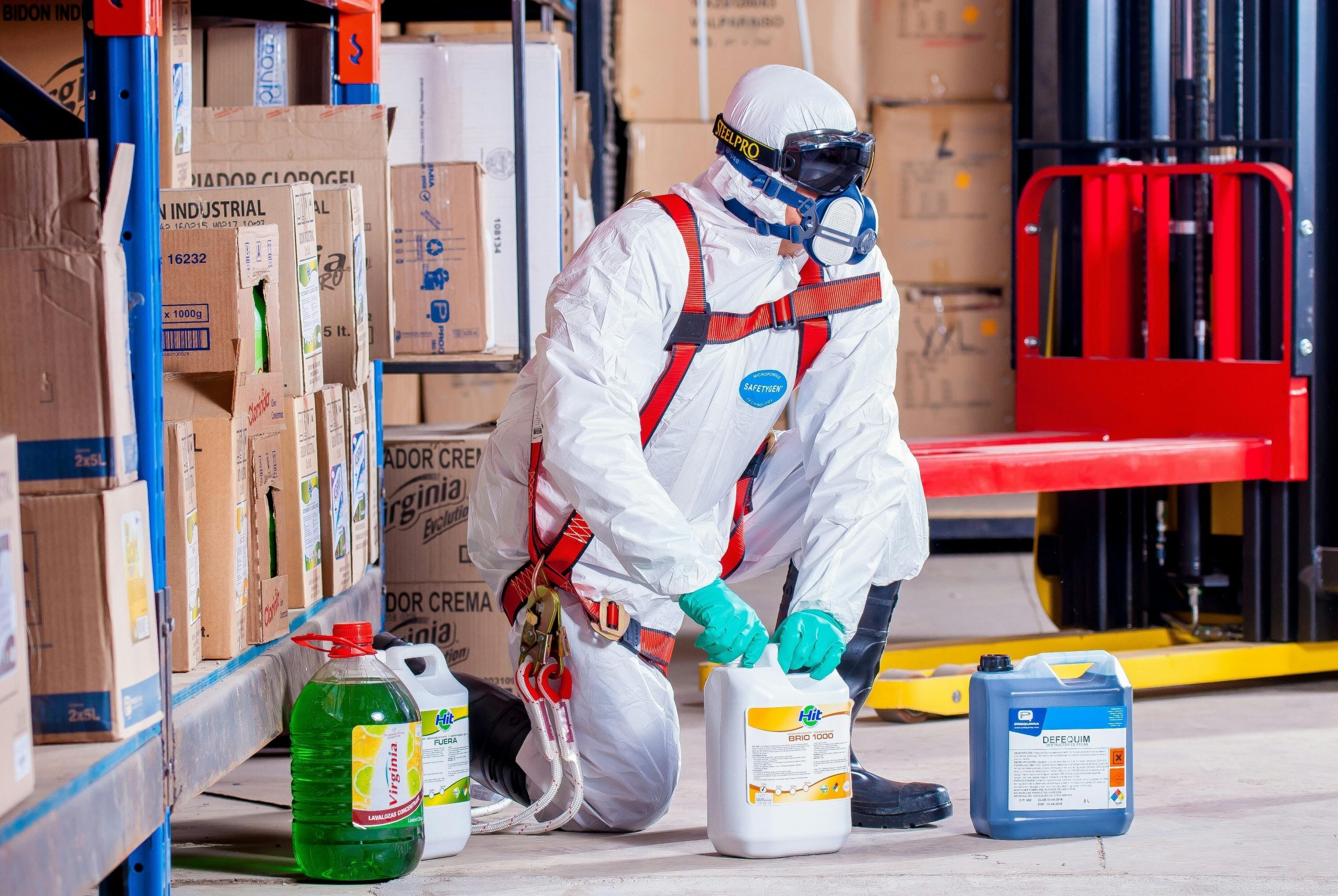Health and Safety policies are an essential means of reducing and mitigating risks in the workplace. Though all policies will share some common features, there are also many factors that are unique to a particular environment. With this in mind, we review the unique challenges that come with delivering effective school Health and Safety.
What are the legal references for Health and Safety in schools?
As well as a moral obligation to students, staff and those visiting the school premises, the school management team also have a legal responsibility to consider. This legal responsibility is defined in two pieces of legislation that are central to Health and Safety policies in all work environments. They are;
- Health and Safety at Work etc. Act 1974
- Management of Health and Safety at Work Regulations 1999
Those developing and implementing Health and Safety measures in schools need to be fully acquainted with the contents of both items of legislation: they determine what is required of the senior leadership team in regards to making the school a safe place to work and study in. The
Health and Safety Executive (HSE) is responsible for enforcing both of these pieces of legislation and is also a good source of additional advice and information should it be required.
Health and Safety in Schools - Who is responsible for what?

As in most workplaces, a school’s organisational structure is often fragmented, with power and responsibility divided and distributed between various bodies and leadership roles. However, formulating an effective Health and Safety policy is dependent on there being a clear chain of command and every individual understanding where they sit within the hierarchy.
In order to provide a clearer picture of how responsibility is typically apportioned, we’ve detailed the various key positions in a school’s leadership structure and elaborated on each of their responsibilities.
The employer will differ depending on the type of school and its funding structure. For instance, in the UK, a school employer could be a Local Authority, charity, Academy Trust, company, partnership, or board of governors. No matter who the employer is, they are responsible for ensuring risks are reduced as far as is reasonably practicable. Though the employer will typically delegate the role of designing and implementing Health and Safety procedures, it cannot delegate the legal responsibility to do so – it is ultimately responsible.
The individual who is responsible for the day-to-day management of a school. While an employer will often help determine the school’s Health and Safety policy and procedures, the head teacher will have considerable autonomy when it comes to implementing these measures. The head teacher is the bridge between staff and the employer and is responsible for ensuring that staff meet the standards set out by the employer. These individuals should also ensure that staff have access to the relevant training, support, guidance, and advice required to carry out their roles.
Members of staff have a responsibility to follow those guidelines established in the school’s Health and Safety policy and to raise Health and Safety concerns by following the proper reporting procedures. Members of staff can also hold other roles, such as trade union Health and Safety representatives, that allow them to become more involved with Health and Safety design and implementation.
What should a Health and Safety policy do?

A school's Health and Safety policy details the guidelines that determine staff behaviour and establishes the parameters for "safe" and "unsafe" actions. It also has a number of other important functions that make it one of the documents that defines a school's approach to Health and Safety. These include;
-
- Establishing roles and responsibilities
A Health and Safety policy should expand on the basic descriptions provided above and provide additional details. It should establish who is responsible for carrying out risk assessments, implementing the recommended measures, and carrying out reviews and assessments.
-
- Describe the mechanisms in place to control risk
A Health and Safety policy needs to describe what structures are in place to guarantee the Health and Safety of students and staff. These are likely to include the processes for risk assessments, reviews, and reporting concerns or breaches of protocol.
Once a risk assessment has been carried out, there should be a number of Health and Safety concerns that need to be acted upon. The Health and Safety policy will detail how the school and those responsible for managing Health and Safety intend to mitigate these risks.
What should a school’s Health and Safety policy include?
Though Health and Safety policies will differ from school to school, there are a number of features that are likely to be common to all educational establishments. While many of these considerations are general and apply to all workplaces, others are exclusive to the school environment. They include;
-
-
- The policy, processes, and procedures for off-site visits. This includes school trips, residential visits, and adventure activities.
- Movement around the school. For instance, the processes for minimising the risk associated with slips, trips, and spills, keeping emergency exits clear, and identifying obstacles to safe movement around classrooms.
- Good and safe use of computers. While electrical equipment presents a number of physical risks, the internet is also a potentially dangerous environment and children should be instructed in best use practices.
- How do staff and students respond to a fire? Where are exits and how will they be kept free of obstacles? Has the necessary equipment been installed? How and when are tests and drills carried out?
- If there are vehicles on-site, how is the risk to students minimised?
- Controlling hazardous substances. These can range from chemical substances in science classes to asbestos in the building’s structure itself.
- Selecting, vetting, and managing those individuals who are allowed on-site. Children are a vulnerable demographic and must be protected from those adults who may wish to do them harm. This means that schools need a proper management system for contractors and visitors.
- Managing work-related stress. Working in the school environment can be stressful and result in health complications or a decline in performance. Procedures should be put in place to mitigate and reduce stress.
Though this list is by no means exhaustive, it does include many of the risks those responsible for Health and Safety in schools need to be aware of.
Carrying out risk assessments in schools

Identifying Health and Safety risks depends upon comprehensive risk assessments being carried out. Risk assessments encourage a systematic approach to Health and Safety and give the school hierarchy the best possible chance of identifying potential dangers. They also provide a means of recording information relating to Health and Safety in the school, ensuring the governing body has a written record of the steps they’ve taken to identify and mitigate risk.
There are 5 steps in carrying out a risk assessment. These are:
-
-
-
- 1. Identify the hazards
- 2. Decide who might be harmed and how
- 3. Evaluate the risks and decide on precautions
- 4. Record your significant findings
- 5. Review your assessments and update if necessary
This approach can be simplified into a checklist template that can be used every time a risk assessment needs to be carried out. The HSE provide a
sample checklist for the classroom.
To create a well-rounded and all-encompassing risk assessment, it’s necessary to consider who you’re trying to protect. While it’s clear that students and staff are a priority, risk assessments also need to consider on-site contractors, visitors, and others who may regularly pass through school property. For instance, some schools share facilities with a leisure centre, whose customers may require access to certain parts of school property in order to reach the centre.
Planning for school security and emergency situations

When discussing Health and Safety in the workplace, we often focus on the small but problematic risks, such as falling on a spillage or hurting your back while lifting. While this is understandable – these risks are far more prevalent in the workplace and are risks we encounter every day – a good Health and Safety policy will also consider the response to more drastic emergency situations. This ensures that all staff members are prepared for such an eventuality.
Planning for emergency situations means thinking about the ways in which a school would respond to a variety of scenarios. These include, but are not limited to;
-
-
-
- Weather events (e.g. flooding or a snowstorm)
- Public health concerns (e.g. an outbreak of a contagious disease or a flu pandemic)
- Injury to students or staff (e.g. a severe accident in class or a traffic accident)
- Damage to the school buildings (e.g. a fire)
- Dangerous criminal activity (e.g. a weapon brought on to school property)
Formulating a response to these specific situations ensures that the school is prepared for most eventualities. However, adequate preparation for all staff members necessitates training.
The importance of staff Health and Safety training

While risk assessments and Health and Safety policies are useful tools, their capacity to mitigate risk is diminished if staff don’t have the required training to identify and respond to risks in the right way. Those responsible for Health and Safety policy need to make decisions as to how and to whom they are going to provide training, as it can be the difference between a safe school environment and a dangerous workplace.
When considering
Health and Safety training, it’s important to consider two broad learning categories.
The first of these is
training staff members to accurately identify risks that are relevant to their role and their job. Qualifying the statement with “relevant to their role and their job” is necessary because not all staff members need to be trained to identify and assess all risks. For instance, training teachers to identify and assess the risks associated with handling asbestos is a waste of time and resources, as an experienced professional is likely to perform this task.
Second, staff should be trained on
how to meet the obligations set out in the school Health and Safety policy. Training can be carried out in many ways but should be delivered in the most suitable manner possible. In some contexts, this will mean delivering a seminar, in others, it will involve holding a comprehensive training course. More often than not, written guidance will be sufficient.
The reporting process
In schools, certain injuries and accidents must be reported for legal reasons. The list of specific injuries, diseases, actions and events is long, complex and regularly updated. However, the most recent information can be found in the
HSE’s RIDDOR document
In a more general sense, an effective Health and Safety policy requires a clear reporting process.
Staff should understand when, how, what, and why they report potential risks and have complete confidence in the reporting process. It’s also essential that there are no obstacles to reporting risk. This means that the process should be quick and easy and that potential issues should be escalated to those in a position of responsibility. Teachers and other members of staff should not be discouraged from reporting risks or incidents by a convoluted, time-consuming process that is unlikely to result in the necessary changes to the school health and safety policy.
Reviews, audits, and assessments

Finally, it’s also vital that reviews, a
udits, and assessments of school Health and Safety policies and procedures are performed on a regular basis.
It’s also a good idea to monitor everyday implementation of the policy to ensure that it is being applied in the correct way. If an incident does occur, it should be investigated and the findings used to inform improvements to the Health and Safety policy. Likewise, schools should carry out regular performance checks to ensure that both their Health and Safety policy and their monitoring system are up to the required standards.
Conclusion
Due to the vulnerable nature of those who are regularly present in educational establishments, there is typically a greater emphasis on school Health and Safety than there is in other workplaces. However, it’s vital that those implementing Health and Safety understand that their responsibility is to reduce risk as much as is reasonably practicable. It is not to eliminate risk entirely. Though this distinction can be vague, there are considerable resources to help guide schools through this process and
Health and Safety professionals can be used to advise on the best way to draft and implement a policy.
 As in most workplaces, a school’s organisational structure is often fragmented, with power and responsibility divided and distributed between various bodies and leadership roles. However, formulating an effective Health and Safety policy is dependent on there being a clear chain of command and every individual understanding where they sit within the hierarchy.
In order to provide a clearer picture of how responsibility is typically apportioned, we’ve detailed the various key positions in a school’s leadership structure and elaborated on each of their responsibilities.
As in most workplaces, a school’s organisational structure is often fragmented, with power and responsibility divided and distributed between various bodies and leadership roles. However, formulating an effective Health and Safety policy is dependent on there being a clear chain of command and every individual understanding where they sit within the hierarchy.
In order to provide a clearer picture of how responsibility is typically apportioned, we’ve detailed the various key positions in a school’s leadership structure and elaborated on each of their responsibilities.
 A school's Health and Safety policy details the guidelines that determine staff behaviour and establishes the parameters for "safe" and "unsafe" actions. It also has a number of other important functions that make it one of the documents that defines a school's approach to Health and Safety. These include;
A school's Health and Safety policy details the guidelines that determine staff behaviour and establishes the parameters for "safe" and "unsafe" actions. It also has a number of other important functions that make it one of the documents that defines a school's approach to Health and Safety. These include;
 Identifying Health and Safety risks depends upon comprehensive risk assessments being carried out. Risk assessments encourage a systematic approach to Health and Safety and give the school hierarchy the best possible chance of identifying potential dangers. They also provide a means of recording information relating to Health and Safety in the school, ensuring the governing body has a written record of the steps they’ve taken to identify and mitigate risk.
There are 5 steps in carrying out a risk assessment. These are:
Identifying Health and Safety risks depends upon comprehensive risk assessments being carried out. Risk assessments encourage a systematic approach to Health and Safety and give the school hierarchy the best possible chance of identifying potential dangers. They also provide a means of recording information relating to Health and Safety in the school, ensuring the governing body has a written record of the steps they’ve taken to identify and mitigate risk.
There are 5 steps in carrying out a risk assessment. These are:
 When discussing Health and Safety in the workplace, we often focus on the small but problematic risks, such as falling on a spillage or hurting your back while lifting. While this is understandable – these risks are far more prevalent in the workplace and are risks we encounter every day – a good Health and Safety policy will also consider the response to more drastic emergency situations. This ensures that all staff members are prepared for such an eventuality.
Planning for emergency situations means thinking about the ways in which a school would respond to a variety of scenarios. These include, but are not limited to;
When discussing Health and Safety in the workplace, we often focus on the small but problematic risks, such as falling on a spillage or hurting your back while lifting. While this is understandable – these risks are far more prevalent in the workplace and are risks we encounter every day – a good Health and Safety policy will also consider the response to more drastic emergency situations. This ensures that all staff members are prepared for such an eventuality.
Planning for emergency situations means thinking about the ways in which a school would respond to a variety of scenarios. These include, but are not limited to;
 While risk assessments and Health and Safety policies are useful tools, their capacity to mitigate risk is diminished if staff don’t have the required training to identify and respond to risks in the right way. Those responsible for Health and Safety policy need to make decisions as to how and to whom they are going to provide training, as it can be the difference between a safe school environment and a dangerous workplace.
When considering Health and Safety training, it’s important to consider two broad learning categories.
The first of these is training staff members to accurately identify risks that are relevant to their role and their job. Qualifying the statement with “relevant to their role and their job” is necessary because not all staff members need to be trained to identify and assess all risks. For instance, training teachers to identify and assess the risks associated with handling asbestos is a waste of time and resources, as an experienced professional is likely to perform this task.
Second, staff should be trained on how to meet the obligations set out in the school Health and Safety policy. Training can be carried out in many ways but should be delivered in the most suitable manner possible. In some contexts, this will mean delivering a seminar, in others, it will involve holding a comprehensive training course. More often than not, written guidance will be sufficient.
While risk assessments and Health and Safety policies are useful tools, their capacity to mitigate risk is diminished if staff don’t have the required training to identify and respond to risks in the right way. Those responsible for Health and Safety policy need to make decisions as to how and to whom they are going to provide training, as it can be the difference between a safe school environment and a dangerous workplace.
When considering Health and Safety training, it’s important to consider two broad learning categories.
The first of these is training staff members to accurately identify risks that are relevant to their role and their job. Qualifying the statement with “relevant to their role and their job” is necessary because not all staff members need to be trained to identify and assess all risks. For instance, training teachers to identify and assess the risks associated with handling asbestos is a waste of time and resources, as an experienced professional is likely to perform this task.
Second, staff should be trained on how to meet the obligations set out in the school Health and Safety policy. Training can be carried out in many ways but should be delivered in the most suitable manner possible. In some contexts, this will mean delivering a seminar, in others, it will involve holding a comprehensive training course. More often than not, written guidance will be sufficient.
 Finally, it’s also vital that reviews, audits, and assessments of school Health and Safety policies and procedures are performed on a regular basis.
It’s also a good idea to monitor everyday implementation of the policy to ensure that it is being applied in the correct way. If an incident does occur, it should be investigated and the findings used to inform improvements to the Health and Safety policy. Likewise, schools should carry out regular performance checks to ensure that both their Health and Safety policy and their monitoring system are up to the required standards.
Finally, it’s also vital that reviews, audits, and assessments of school Health and Safety policies and procedures are performed on a regular basis.
It’s also a good idea to monitor everyday implementation of the policy to ensure that it is being applied in the correct way. If an incident does occur, it should be investigated and the findings used to inform improvements to the Health and Safety policy. Likewise, schools should carry out regular performance checks to ensure that both their Health and Safety policy and their monitoring system are up to the required standards.






